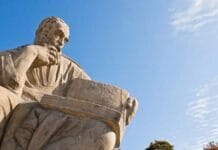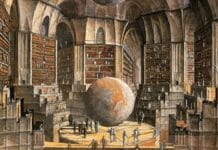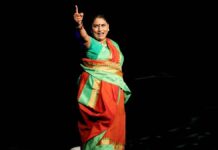Kanthapura is a fictional but realistic account of how the great majority of people in India lived their lives under British rule and how they responded to the ideas and ideals of Indian nationalism. It portrays the participation of a small village in South India in the national struggle called for by Mahatma Gandhi. Imbued with nationalism, the villagers sacrifice all their material possessions in a triumph of the spirit, showing how in the Gandhian movement people shed their narrow prejudices and unite for the common cause of the non-violent civil resistance to the British Raj.
Kanthapura is a small traditional village with all the primitive structure of an Indian society, divided, obsessed and loitering as a handicapped entity cocooned from the rest of the world and etherized as Eliot’s modernity. And this village is afflicted now, assailed by Gandhian philosophy, the haunted party is aggrieved. Civil Disobedience Movement (Dandi March and Satyagraha), the Non-Cooperation Movement (by non-payment of taxes and defiance of the British Government), the grass root programme of Congress Committee (Nehru’s social programme and Gandhi’s message), the campaign against ill practices (like untouchability, drinking, child marriage, widowhood, illiteracy, communal feeling, sexual exploitation, etc.) and finally the unification of the whole society for a singular nationalistic cause, all these things are anxiety towards freedom and nationhood.
Kanthapura is the urge to be free from the demon of the foreign rule. Kanthapura as India in microcosm has religion as its backbone that influences its social and political activities. Talk of communal harmony, Swaraj, khadi, Gandhi-bhajans replace Harikhata; temple becomes the platform for political interactions, Ram / Krishna is replaced by Gandhi: in a sense, innocence and ignorance of villagers provide a congenial atmosphere for sowing the seeds of nationality. The first step towards freedom is nationalistic consciousness, which is to be generated by Raja Rao and he is aware of this necessity; religion is the earliest weapon, Siva is the three-eyed, and Swaraj, too, is three-eyed: self-purification, Hindu-Muslim unity and khaddar, thus the consciousness is injected through popular sentiments. It is not a political movement only, it includes social as well as religious waves too. Unexpectedly, Moorthy proves to be ahead of Gandhi. For these religious villagers, Gandhi is an incarnation like Lord Rama and Lord Krishna, who came to establish righteousness and so the satyagraha became a religious ritual.
Right from the beginning a reader feels a change in the small remote orthodox village, the agent is completely transformed Moorthy, the motivation is complete and experiences a sort of nationalism. Moorthy is the jargon of Kanthapura, no one can understand him in the beginning; subsequently, he is simplified and made acceptable. Transformation continues; Moorthy continues to develop, though he does not get support from all quarters and imperialism seems to be crumbling. Achakka’s thinking and behaviour reflect her understanding of the dynamics between the village and the Indian nation as the blending of tradition and modernity. Kanthapura undergoes the process of nationalization, as an intricate and dynamic process and the process is an internal one.
The numerous characters in Kanthapura demonstrate the sense of community that unifies the plot and gives substance to the political and social conflicts. There is a sense of teeming life, and because the larger question is not about an individual’s fate but about a group’s destiny, Raja Rao’s mode of characterization is impressionistic. Dialogue is kept to a minimum, and the focus encompasses both the masses in the background and certain salient figures in the foreground.
The conflict between acquiescence to time-honoured tradition and resistance to old tyrannies is dramatically expressed in the two factions: the Gandhians and their foes. Moorthy is the prime representative of the modern Indian struggling with dignity for freedom. He is described as a “noble cow, quiet, generous, serene, deferent, and Brahmanic”, who has returned to his village of Kanthapura. In the novel, he is referred to as the “small mountain,” while Mahatma Gandhi is the “big mountain.” He adheres to truth, non-violence, and civil disobedience, refusing to protest his incarceration. So thoroughly Gandhian is he in his creed and practices that he scandalizes his mother with his unconventional fraternization with the Pariahs, and he is willing to suffer rejection and violence in the name of his cause. Like his mentor, he exerts both a political and a spiritual force. Yet he eventually turns from Gandhi to Nehru in an abrupt recognition that saintliness is not necessarily synonymous with political wisdom.
Rao skillfully controls the focus of the novel by bringing forward subsidiary characters at particular moments when they can sharpen the conflicts. They are usually distinguished by a single facet of personality: Bhatta is known by his smiling, false charm; Rangamma by her eloquent disputatiousness; Patel Range Gowda by his ceremonious speech; and Dore by his scoffing manner. Bhatta is a wealthy landowner in Kanthapura who exploits the villagers and has nothing to do with the Gandhian philosophy. He goes on to oppose Moorthy in establishing the Congress Party and is an indirect agent of the British government. Rangamma is a “deferent, soft-voiced, gentle-gestured” but strong woman who can read and write. She is a childless widow but is well respected because of her resolution and high aspirations. Rangamma rejects Bhatta’s religious dictatorship in favour of Gandhian Moorthy. She educates and leads the women of Kanthapura to form a non-violent resistance group called “Sevis,” and is eventually imprisoned.
Kamalamma is the sister of Rangamma. She stands in stark contrast to the values exhibited by Rangamma. Ratna is the fifteen-year-old daughter of Kamalamma. However, she has more in common with her aunt Rangamma. She, too, is inspired by Gandhian philosophy and is very iconoclastic and independent and does not care for traditional social propriety. She leads the Sevis after Rangamma’s imprisonment, having attained a new gravitas and wisdom. Narsamma is Moorthy’s elderly mother, who loves her son very much but is extremely distressed to think about the trouble he is bringing to the village – especially ex-communication. Officially, Patel Range Gowda is the Primary Executive Officer of Kanthapura village. However, he acts as the mayor of the entire village. He has a strong and formidable presence, and no decision can reach its conclusion without Range Gowda’s approval. He is often referred to as the “tiger” of the village. He uses his social authority to assist Moorthy and is eventually relieved of his patelship.
Because the crux of the novel is a struggle for independence, there are the adversaries of Gandhi and, hence, independence. Although these figures are not without their melodramatic evil, they are granted their moments of fair combat when they summon up all of their arguments against Moorthy. Such is the case with the government man who appears at a nationalist gathering and presents his cunning rhetorical attack on the Gandhians. Bade Khan is the heavyset, bearded Muslim policeman who has recently arrived in Kanthapura. He is an agent of the British government and is hostile towards all forms of protests.
The story shows the birth of new ideas in old India. The arguments against change which in the Gandhian sense is a change of soul and not simply of caste or social function are made forcefully by reactionaries who point to the disorder, corruption, and arrogance of pre-British rule. Playing upon raw fear in the populace, the antinationalists argue that reform will mean the eventual corruption of castes and the great ancestral traditions. The theme, as of a legend, is one of cultural set-up. It is a cosmic struggle between transcendent righteousness and the ever-proud illusion of evil. The former is transcendent as it has the resilient power to crusade against vain powers of evil from times immemorial. The latter has a proud illusion as it is its vulnerable, ever defeated and never abandoned nature. Both the powers are identified with the Indian who is a Satyagrahi and the Red man who is a powerful coward.





























